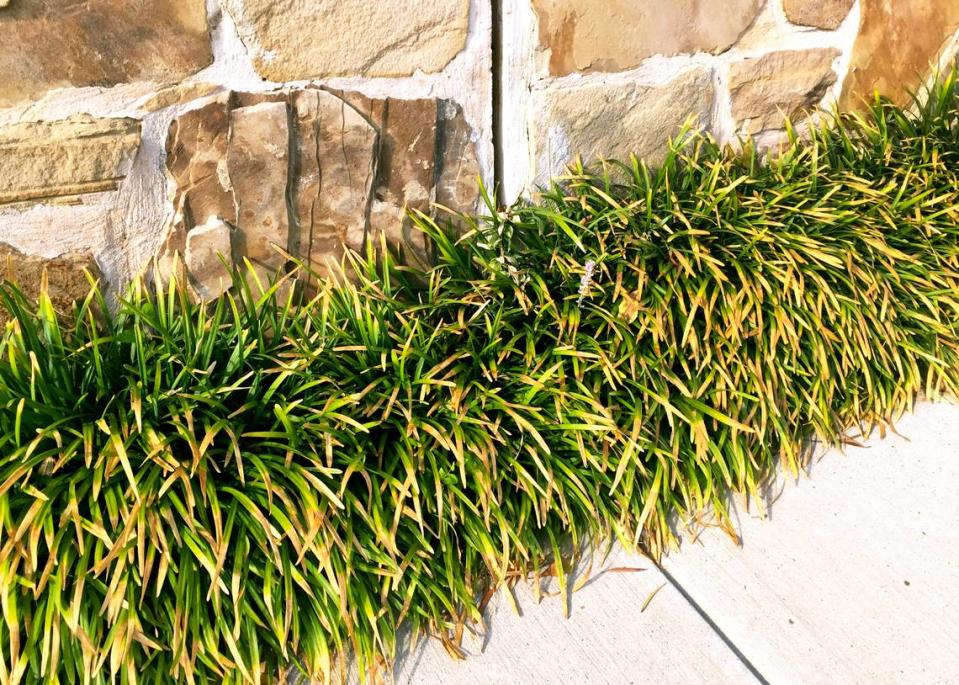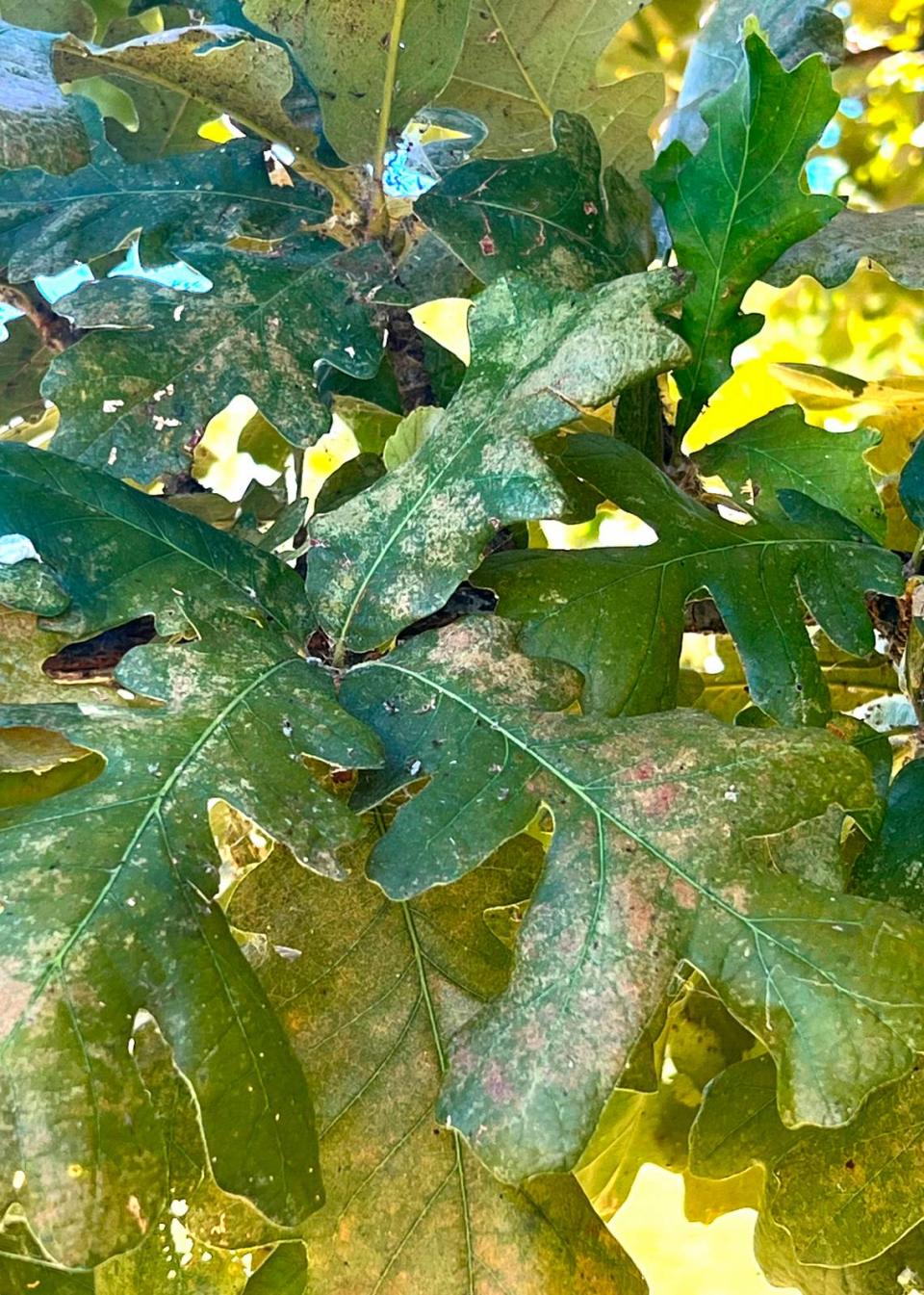What’s wrong with my plant? Here’s how a Texas gardening expert diagnoses problems
As my wife and I were driving toward the Metroplex (a name as yet unused) in 1970, I was excited by my new job as a county extension horticulturist for Texas A&M. We tuned our radio to one of the local stations and it was playing a program called “Speak to the Experts.” An attorney was answering questions live on the air. I thought to myself, what kind of person would be so courageous as to expose his reputation on 50,000 watts in front of half of the state?
I worked for the Extension Service for seven years. They went on to be called the Texas AgriLife Extension. I went on to become “that kind of person.” Since 1978 I’ve been doing three radio programs weekly where I address people’s gardening questions live on the air. And, for 30 years, on that very same station. It’s funny where life takes you.
I keep a log of all the questions I take. Callers’ names, cities, and topics. It lets me know what topics are hot, when they crop up, and where they’re of concern. I’ve taken about 450,000 questions, all logged into my notebooks. And there certainly are trends. I have found those trends to be very helpful.

How I diagnose problems on the air
Talk radio is made up of phone calls. You don’t have the luxury of being able to see a listener’s plant sample, so diagnosing the problem takes a rather repetitive pattern. Here are the steps along my path.
Step 1: Identify the plant. If you call your veterinarian, they’re going to want to know what kind of animal is involved. What bothers a dog won’t impact a goldfish. Each plant species will have its own set of potential problems — some more than others. Knowing the plant’s ID is a critical first step. Hang onto the plant tags in a folder or small scrapbook. Better yet, take photos of them and keep a page on your computer along with information you’ve gleaned from credible websites.
Step 2: Determine when the problem began. Has it been going on all year, or did it just show up? If the latter, it might be related to recent changes in weather, maybe while you were out of town for a few days. Was any kind of product applied by you or a lawn care company a few days or weeks prior to the problem’s first appearance?
Step 3: How much of the plant is involved? If it’s just one side of a tree, examine the trunk for signs of injury on that side. Or perhaps there was digging and root damage done on that side. Perhaps there was drift of a weedkiller spray on that side.
Step 4: Are other plants nearby also impacted? (This is a big one!) Are they of the same species? If they aren’t, then likelihood of the problem being due to insects or diseases is diminished, since those are usually specific to closely related species. A good example: fire blight impacts only members of the rose family of plants. By comparison, environmental concerns such as drought, poor soils, excessive heat or cold, etc. will impact unrelated plants.

Step 5: Does the problem appear to be spreading? If afflicted plants are of the same species, and if the problem is moving down a row of the plants, this is the time to inspect your plants closely for insects or diseases that might be spreading from plant to plant. Look closely at both sides of the leaves and at the twigs, too.
Step 6: Is the problem moving toward the ends of the branches? In other words, is it showing up on current growth? If so, that’s your evidence that it’s still active and that you need to act quickly.
Step 7: Are leaves actually being consumed? Chewing types of insects (grasshoppers, katydids, caterpillars, etc.) consume parts or all of the leaves. They’ll leave droppings behind, and if they’re still active you’ll be able to see the live insects on your plants. Sevin dust works well on most chewing insects, but so will many other general-purpose insecticides. Bacillus thuringiensis (Bt) biological worm control is preferred on caterpillars, notably “looping” types that arch their bodies as they make their way across leaf surfaces. Systemic insecticides work well on many types.
Step 8: Are insects piercing/sucking types? These the leaves will generally be intact, but they may lose their green color. Spider mites and lace bugs seem to suck the color right out of leaves before turning them yellow, then brown and crisp. These pests are very damaging. Systemic insecticides and some general-purpose insecticides will usually help with these. You may have to look very closely to see the actual pests, but often they will still be present.
Step 9: Learn the diseases that might show up on each type of plant that you’re growing. Do your homework ahead of time. By knowing the exact plant involved, you’ll be years ahead in identifying the nature of any problem. I start with a Web search using key words “university plant pathology plant name” and any other very brief description of the problem such as “fruit rot” or “leaf spot” to help me get right to the actual issue. I try to utilize southern ag colleges such as Texas A&M, Oklahoma State, Clemson, North Carolina State, Auburn, and the University of Georgia. Those seem to have useful information most commonly.
Step 10: Learn symptoms of moisture stress. I couldn’t finish my story without including this one. It manifests with tip burn and leaf edges browning, both very common. Those are the last places to get water and the first places to dry out when it’s dry. That’s where a plant will tell you that you’re slacking off in getting enough water down to its roots. Take notice of that warning and rescue your plants quickly.



